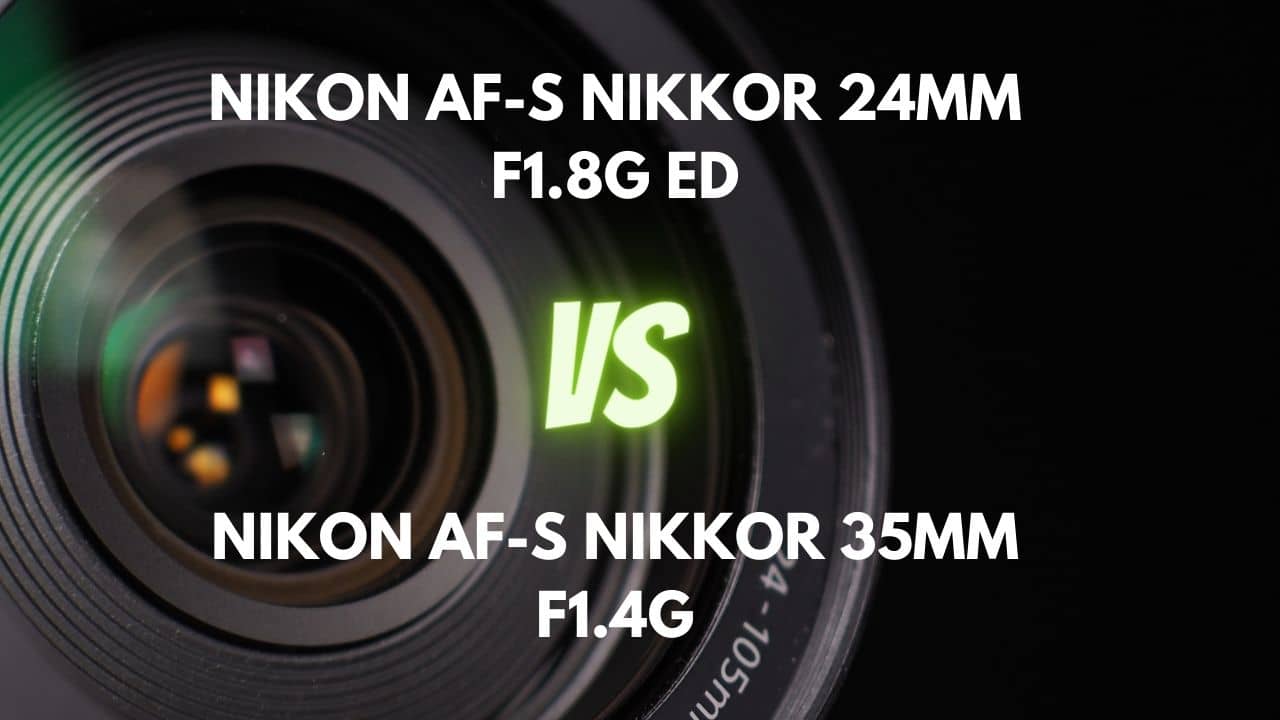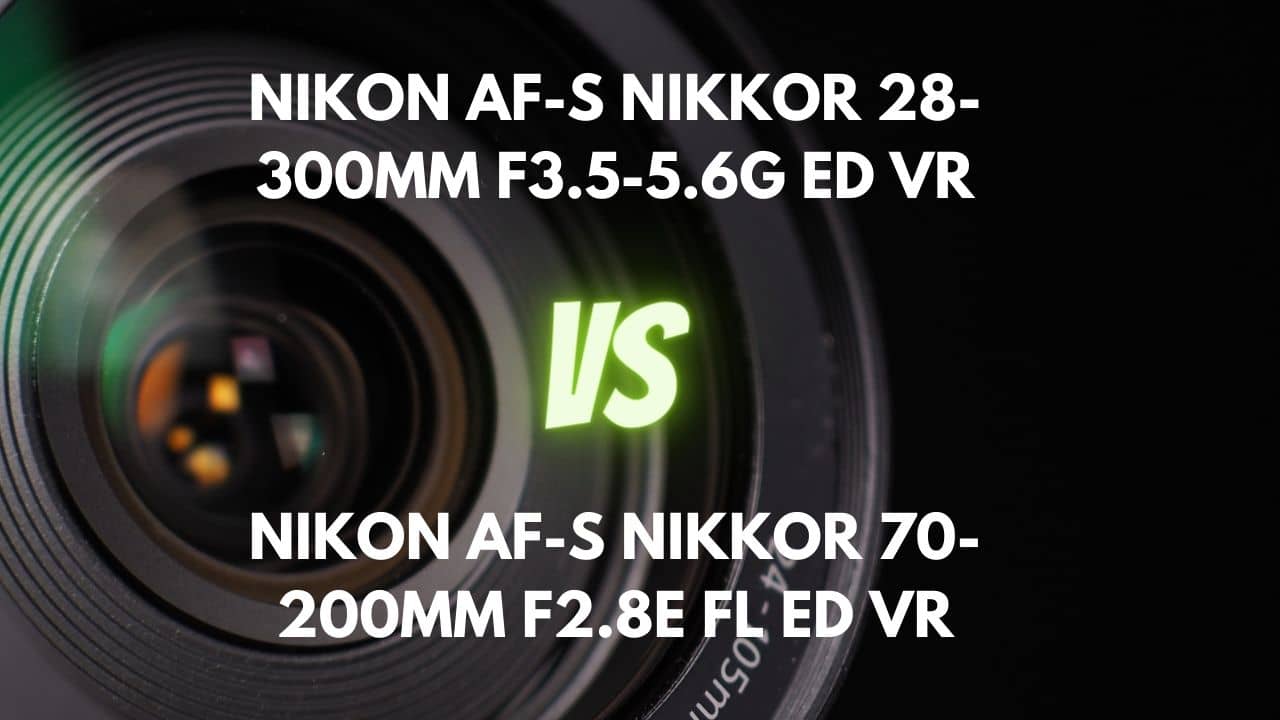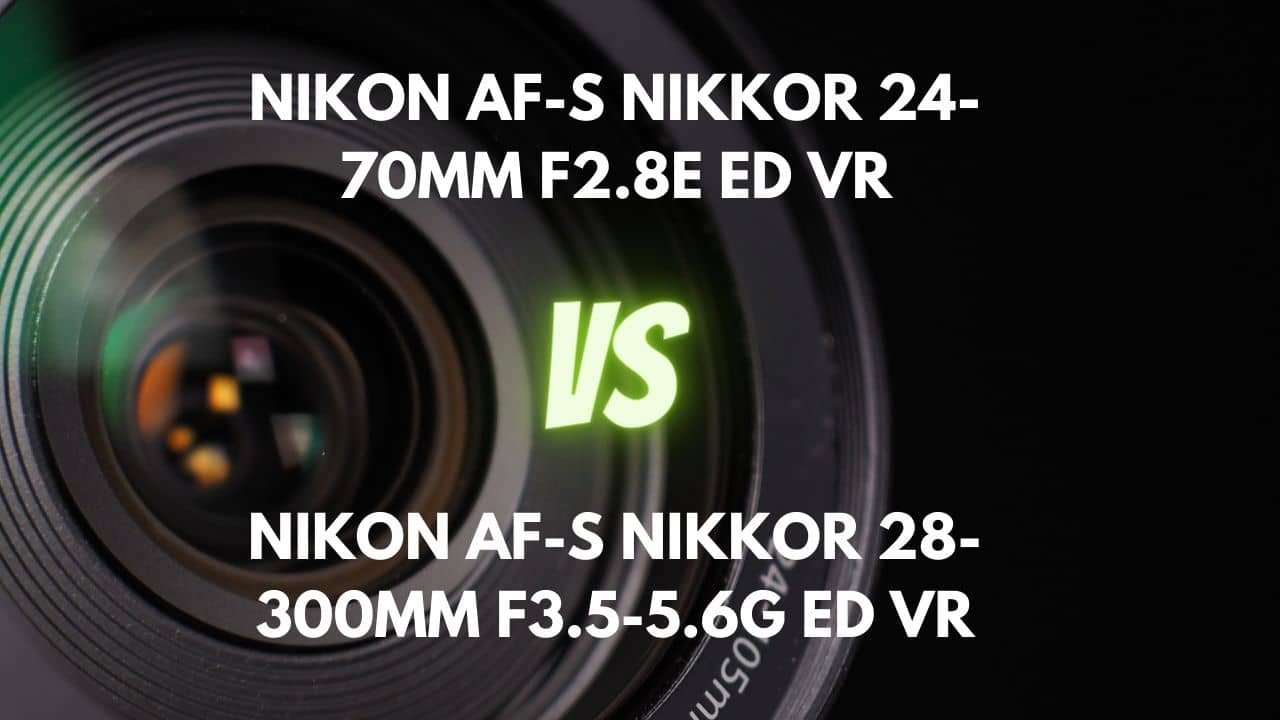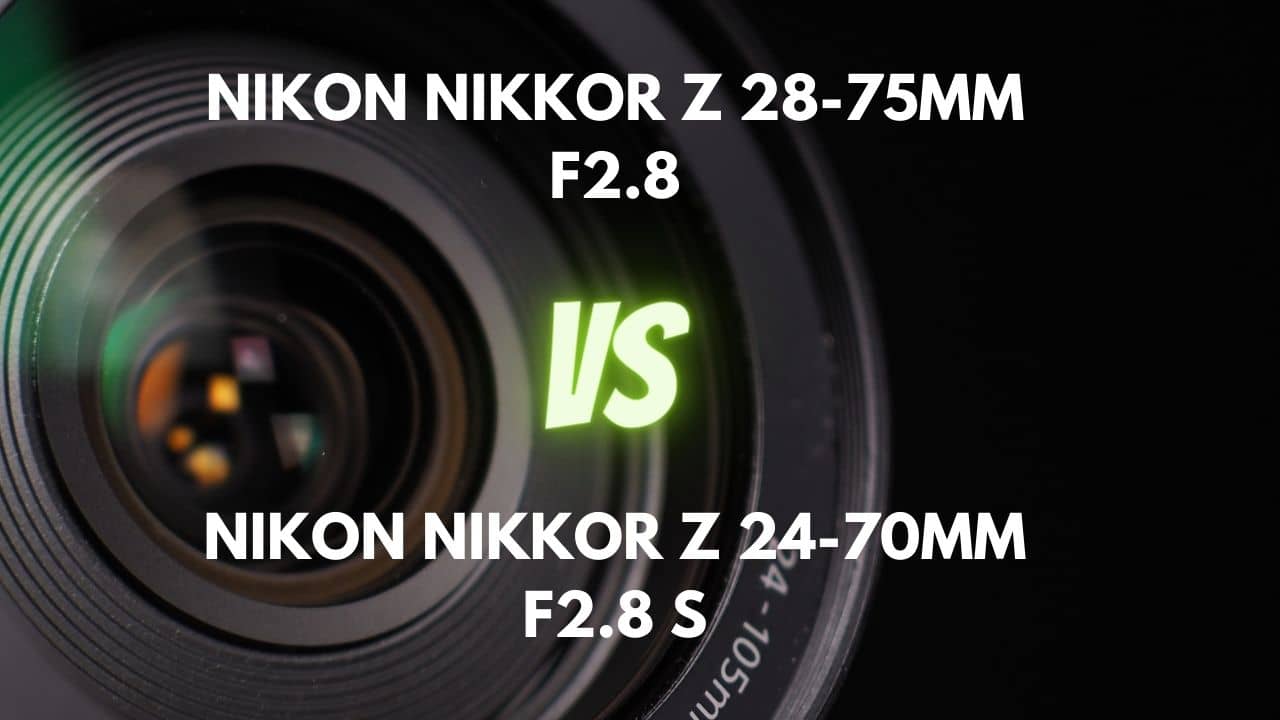Are you in search of the perfect lens to level up your photography game? Look no further, as we dive deep into a comparison of two popular Nikon lenses: the versatile Nikon DX 18-55mm f/3.5-5.6 and the impressive prime lens—Nikon DX 35mm f/1.8.
We understand that different photographers have unique needs, and whether you’re a casual shooter, a passionate enthusiast, or a seasoned professional, finding the right lens can make all the difference in your work.
In this article, we’ll explore the advantages and trade-offs of these two lenses, examining their performance in various aspects such as sharpness, low light capabilities, depth of field control, and more. From capturing breathtaking landscapes and architectural wonders to immortalizing intimate moments in portraiture, we’ll help you determine which lens best fits your creative vision and photography goals.
Stay with us as we unlock the potential of these two lenses and equip you with the knowledge to make an informed decision, enabling you to capture stunning images that truly stand out.
Let’s embark on this journey to find the perfect lens companion for your photographic adventures!
Overview
| Nikon AF-P DX NIKKOR 18-55mm F3.5-5.6G VR | Nikon AF-S DX NIKKOR 35mm F1.8G | |
|---|---|---|
| Max Aperture | F3.5-5.6 | F1.8 |
| Aperture Type | Variable | Fixed |
| Focal Range (mm) | 18-55 | 35 |
| Max Format | APS-C / DX | APS-C / DX |
| Zoom Ratio (X) | 3.1 | 1 |
The Nikon DX 18-55mm f/3.5-5.6 is a variable aperture zoom lens with a maximum aperture range of f/3.5-5.6 and a 3.1x zoom ratio. It covers a focal range of 18-55mm and is designed for APS-C / DX format cameras.
This lens is ideal for beginners or hobbyist photographers who versatility, as it offers a versatile focal range suitable for various photography genres such as travel, events, and casual shooting. However, its smaller maximum aperture at longer focal lengths may struggle in low light situations, and it may exhibit some compromises in image quality compared to fixed aperture lenses.
In contrast, the Nikon DX 35mm f/1.8 is a fixed aperture prime lens with a maximum aperture of f/1.8. It has a focal length of 35mm and is also designed for APS-C / DX format cameras. The larger maximum aperture allows for better low light performance, shallower depth of field, and overall better image quality, making it an excellent choice for portraits, street photography, and low light situations. However, being a prime lens, it lacks the versatility of a zoom lens, which may limit its usefulness in certain situations.
In summary, the 18-55mm lens offers greater flexibility in terms of focal range, making it a good choice for casual photographers.
On the other hand, the 35mm lens provides better low light performance, image quality, and depth of field control, making it a superior option for photographers who prioritize these factors and are willing to work with a fixed focal length.
Design and Ease of Use
| Nikon AF-P DX NIKKOR 18-55mm F3.5-5.6G VR | Nikon AF-S DX NIKKOR 35mm F1.8G | |
|---|---|---|
| Diameter x Length (mm) | ⌀64.5×62.5mm | ⌀70×52.5mm |
| Weight (gr) | 205 | 200 |
| Filter Thread (mm) | 55 | 52 |
| Weather Sealing | No | No |
| Zoom Method | Rotary (extending) | No Zoom |
| Distance Scale | No | No |
| DoF Scale | No | No |
| Hood Supplied | No | Yes |
| Hood Code | HB-N106 | HB-46 |
The Nikon DX 18-55mm f/3.5-5.6 has a diameter of 64.5mm and a length of 62.5mm, weighing 205 grams. It features a rotary (extending) zoom method, meaning the lens physically extends when you zoom in or out. This design can be more cumbersome to handle, and the extending design might make it more difficult to achieve effective weather sealing. Additionally, the camera’s balance can change while zooming, which may require more effort to maintain stability during shooting.
On the other hand, the Nikon DX 35mm f/1.8 has a diameter of 70mm and a length of 52.5mm, weighing slightly less at 200 grams. It has no zoom, which means the length of the lens always remains the same. This compact and lightweight lens is easier to carry around, provides better balance, and allows for more discreet shooting in certain situations, such as street photography. It also takes up less space in your camera bag, leaving room for additional gear.
Lens Mount and Barrel
The Nikon DX 18-55mm f/3.5-5.6 features a plastic barrel and mount, making it lightweight and more affordable. However, it lacks a rubber gasket around the mount for protection against moisture and dust, which could be a disadvantage in certain shooting environments.
The lens barrel has a retractable design, reducing its size when not in use. While the plastic construction may not be as durable as metal, it offers a budget-friendly option for photographers prioritizing portability.
In contrast, the Nikon DX 35mm f/1.8 has a metal lens mount, providing a heavy-duty quality and longevity to the mount threading. The rubber gasket around the mount offers protection against moisture and dust.
The lens barrel is made of hard polycarbonate with some plastic parts like the filter threads, hood, focus ring, and focus helicoids. Although the construction is not entirely professional, it is not all plastic, and Nikon has not compromised on the overall build quality.
Weather Sealing
The Nikon DX 18-55mm f/3.5-5.6 lacks weather sealing, offering no protection against dust, moisture, and light water splashes. This can make the lens less suitable for outdoor photography in challenging weather conditions, potentially requiring extra care and protection to maintain its performance and durability.
On the other hand, the 35mm lens features a generous weather sealing gasket at the lens mount, suggesting some degree of weather resistance. This added protection ensures better durability and performance in various outdoor conditions, making it more suitable for photographers who often shoot in harsh environments.
In conclusion, the Nikon DX 35mm f/1.8 with its weather sealing offers superior protection compared to the 18-55mm lens, which lacks such features. If you frequently shoot in unpredictable weather conditions or require additional protection for your equipment, the 35mm lens would be the better choice.
However, if you mainly shoot indoors or in controlled settings, weather sealing may not be a top priority, and the 18-55mm lens could still be a suitable option.
Rings
The Nikon DX 18-55mm f/3.5-5.6 features a zoom ring with markings for 18mm, 24mm, 35mm, 45mm, and 55mm, which is equipped with a rubber grip for comfortable handling. The zoom ring provides a smooth and tactile experience suitable for most users.
The lens also includes a narrow focus ring located at the front of the barrel. However, manual focusing is not a strong point for this lens, as it lacks a windowed distance scale or depth-of-field indicator. There is no extension lock switch on the zoom ring.
In contrast, the Nikon DX 35mm f/1.8 has a single focus ring located at the front of the barrel, covered with rubber for an enhanced grip. Despite its plastic construction, the focus ring feels slightly sticky when rotating. The lens does not include a focus distance scale or depth-of-field indicator, which may be disadvantageous for street photographers.
The focus ring exhibits minimal play when changing focus direction in manual focus mode, but a slight image shift is noticeable in maximum magnification in Live View. Since it has a fixed focal length of 35mm, there is no zoom ring on this lens.
In conclusion, the 18-55mm lens offers a better overall ring experience, with its smooth zoom ring and rubber grip for comfortable handling. However, neither lens excels in manual focusing due to the absence of a windowed distance scale or depth-of-field indicator.
If zoom capabilities are essential for your photography needs, the 18-55mm lens is the superior choice. On the other hand, if you prefer a prime lens with a fixed focal length and can work around the limitations of the focus ring, the 35mm lens may be a suitable option.
Switches/Buttons
The Nikon DX 18-55mm f/3.5-5.6 is designed with minimal physical switches or buttons on the barrel. The only button present is a small lock button used for retracting and extending the lens. To switch between auto and manual focus or engage and disengage image stabilization, you must navigate the camera’s menu system.
The lens release button on the outer barrel is pressed while rotating the zoom ring to unlock the lens and extend it to the shooting position. To collapse the lens, the button must be held in while rotating the zoom ring, which reduces the lens’s overall length by approximately 30mm.
On the other hand, the Nikon DX 35mm f/1.8 features two switches on the barrel. The first is an auto/manual focus switch, allowing users to quickly switch between autofocus and manual focus modes. In the “M/A” position, autofocus is enabled, and users can manually adjust the focus at any time. In the “M” position, the lens is locked in manual focus mode, offering greater control over focus adjustments.
In conclusion, the 35mm lens has a more user-friendly design when it comes to switches and buttons, providing easier access to essential functions like autofocus and manual focus switching. The 18-55mm lens requires users to navigate the camera’s menu system to adjust similar settings, which may be less convenient in certain shooting scenarios. Therefore, the 35mm lens is superior in terms of switches and buttons, offering a more accessible and efficient user experience.
Filter Thread
The Nikon DX 18-55mm f/3.5-5.6 features a 55mm plastic filter thread, which is a fairly common size, making it easy to find compatible filters. The front element does not rotate during focus, ensuring convenience when using circular polarizing filters. However, the front element does rotate when zooming, which may make using a polarizer slightly cumbersome in certain situations. Despite this, the lens remains relatively easy to use with filters.
In contrast, the Nikon DX 35mm f/1.8 has a 52mm filter thread size, consistent with many other short Nikkor primes. Although made of plastic, the filter thread is easy to use with filters and does not cause vignetting, even when using thick filters. The filter ring never rotates or moves, making it highly convenient for filter use.
In conclusion, the 35mm lens offers a superior filter thread experience due to its stable, non-rotating filter ring and compatibility with thicker filters without vignetting issues. The 18-55mm lens is still relatively easy to use with filters, but its rotating front element during zooming can make using a polarizer slightly more challenging. Therefore, for a more seamless filter experience, the 35mm lens is the better choice.
Lens Hood
The Nikon DX 18-55mm f/3.5-5.6 does not include a lens hood in the package, and users need to purchase the optional HB-N106 bayonet hood separately. This plastic hood has a matte finish and is designed to fit snugly onto the lens to effectively block unwanted light, reducing lens flare and ghosting. The hood can be smoothly rotated to adjust its direction according to the light source, making it a useful accessory for outdoor photography and improving image quality by reducing lens flare and ghosting effects.
On the other hand, the Nikon DX 35mm f/1.8 comes with a plastic bayonet HB-46 hood in most markets. Although not provided for the test, the hood is known to work well, but it may not block off as much light as desired.
In conclusion, the 18-55mm lens’s optional HB-N106 bayonet hood offers superior performance as it is designed to effectively block unwanted light, reducing lens flare and ghosting. While the 35mm lens’s included HB-46 hood does provide some protection, it might not be as effective in preventing light ingress. Therefore, for better lens hood performance, the 18-55mm lens with the optional HB-N106 hood is the recommended choice, despite the need for a separate purchase.
Focusing and Optical Stabilization
| Nikon AF-P DX NIKKOR 18-55mm F3.5-5.6G VR | Nikon AF-S DX NIKKOR 35mm F1.8G | |
|---|---|---|
| Autofocus | Yes | Yes |
| AF Motor | Stepper motor | Silent Wave Motor |
| Rotating Front Element | Yes | Does not rotate on focusing |
| Min Focus Distance | 0.25m | 0.3m |
| Max Magnification (X) | 0.38 | 0.16 |
| Full-Time Manual Focus | Yes | Yes |
| Focus Method | Internal | Internal |
Focusing Performance
The Nikon DX 18-55mm f/3.5-5.6 features an autofocus system that is quick, near-silent, and ideal for shooting videos without distracting noise. The focusing performance is smooth, responsive, and approximately 30% faster than older models. The lens performs reliably in low-light situations and can focus accurately.
The AF-P version offers instant manual focus override, making it easy to use without switching between autofocus and manual focus modes. The manual focus action is smooth, and the internally focusing design maintains a constant length, regardless of focus and zoom settings. Additionally, the lens exhibits minimal focus breathing, making it suitable for various photography and videography applications.
In contrast, the Nikon DX 35mm f/1.8 has smooth, fast, and quiet autofocus when using the optical viewfinder but hunts back and forth before locking focus in Live View. The autofocus is based on a ring-type ultrasonic system with full-time manual override via a mechanically linked focus ring. However, it’s not ideal for manual focus video as it creates some noise when turning.
In conclusion, the 18-55mm lens offers superior focusing performance compared to the 35mm lens. Its quick, near-silent autofocus, smooth manual focus action, and minimal focus breathing make it a versatile choice for a range of photography and videography applications. While the 35mm lens also has fast autofocus using the optical viewfinder, its limitations in Live View and noisier manual focus make the 18-55mm lens the better option for overall focusing performance.
Optical Stabilization
The Nikon DX 18-55mm f/3.5-5.6 features a 4-stop optical image stabilization system, which effectively reduces camera shake, allowing for sharper photos even at slower shutter speeds. The VR technology performs well, making it possible to shoot at shutter speeds as slow as 1/5 second while maintaining acceptable sharpness. This silent VR system has only one mode but proves effective in various shooting conditions. However, actual results for shutter speeds will vary depending on the photographer’s technique and shooting conditions.
On the other hand, the Nikon DX 35mm f/1.8 does not have optical stabilization. While optical stabilization is not as essential for wide-angle lenses, it can be beneficial in certain situations, such as shooting handheld in low-light conditions, at slower shutter speeds, or when recording video.
In conclusion, the 18-55mm lens offers superior optical stabilization compared to the 35mm lens, which lacks this feature entirely. Although optical stabilization might not be critical for wide-angle lenses, the 4-stop stabilization system in the 18-55mm lens provides an advantage in various situations, helping photographers achieve sharper images and smoother footage.
Image Quality
| Nikon AF-P DX NIKKOR 18-55mm F3.5-5.6G VR | Nikon AF-S DX NIKKOR 35mm F1.8G | |
|---|---|---|
| Special Elements | Two aspherical elements + super integrated coating | 1 ASPH |
| Diaphragm Blades | 7 | 7 |
| Circular Aperture | Yes | Yes |
Aberration
The Nikon DX 18-55mm f/3.5-5.6 exhibits a controlled amount of lateral chromatic aberration, with noticeable improvements compared to its predecessor, the AF-S VR II version. However, some purple and yellow chromatic aberrations can still be observed in the corners of the frame, although they can be easily corrected in-camera or with post-processing software.
In contrast, the Nikon DX 35mm f/1.8 shows some lateral chromatic aberration towards the corners of the frame at f/4 and narrower apertures, but this issue is also automatically corrected in-camera by current and recent Nikon DSLRs.
Longitudinal chromatic aberration can occasionally be a problem, especially in out-of-focus areas, but it is not a frequent issue. Spherochromatism is present at f/1.8, which results in out-of-focus highlights being slightly tinged with green in the background and magenta in the foreground. However, this effect is not very noticeable.
In conclusion, both lenses exhibit some level of chromatic aberration, but the 18-55mm lens has a more controlled amount compared to the 35mm lens. Although both lenses can correct chromatic aberrations in-camera or with post-processing software, the 18-55mm lens performs slightly better in this regard, making it the superior choice in terms of aberration control.
Sharpness
The Nikon DX 18-55mm f/3.5-5.6 demonstrates good sharpness, particularly in the center, throughout its focal range. Center sharpness is particularly impressive when stopped down to f/8 or f/11. Corner sharpness is generally softer, especially at wide-open apertures, but improves significantly upon stopping down.
The sharpest aperture tends to be around f/8 to f/11, depending on the focal length. At 18mm, the lens is super-sharp wide open, while at 55mm, it remains sharp across the frame. Stopping down enhances sharpness and contrast, making the lens suitable for various applications at focal lengths like 35mm.
In comparison, the Nikon DX 35mm f/1.8 is very sharp, even wide-open at f/1.8. The center is at its sharpest at f/4 and f/5.6, but images are commendably sharp from f/2 through f/11. Edge sharpness is best between f/2.8 and f/8, and the sharpness is impressive across the whole image frame from f/2.8 to f/8.
However, the sharpness is slightly lacking wide-open at f/1.8, particularly towards the edges of the frame. Stopping down from f/1.8 to f/2 results in slightly improved sharpness, with f/2.8 being much sharper than f/2. The sharpest aperture is at f/4 and f/5.6.
In conclusion, both lenses exhibit good sharpness performance, but the 35mm lens outperforms the 18-55mm lens in terms of overall sharpness, especially when stopped down to its optimal apertures. The 35mm lens delivers impressive sharpness across the entire frame, making it the superior choice for photographers seeking the best possible sharpness in their images.
Bokeh Quality
The Nikon DX 18-55mm f/3.5-5.6 produces bokeh that is subjective in quality, with highlights rendering as septagonal shapes and some visible outlines. While not expected to have a smooth and silky bokeh, shallow depth-of-field photos can be achieved when zoomed in to 55mm and shooting objects at the closest possible distance of 25 cm. The bokeh quality of this lens is considered satisfactory for its intended use.
On the other hand, the Nikon DX 35mm f/1.8 exhibits fair to poor bokeh when wide open, but it slightly improves when stopped down. The lens design plays a significant role when working with less cooperative backgrounds, as a homogeneous background would result in smooth bokeh with virtually any lens.
In conclusion, while neither lens excels in bokeh quality, the 35mm lens offers a slightly better performance when stopped down. However, it is essential to remember that bokeh quality is typically not a primary concern for some cases. In instances where bokeh plays a role, such as environmental portraits or close-up photography, the 35mm lens may be the better choice for photographers seeking a more pleasing background blur.
Flare/Ghosting
The Nikon DX 18-55mm f/3.5-5.6 displays excellent control over ghosting and flare, largely due to Nikon’s Super Integrated Coating. Even when shooting directly into the sun, the lens manages to handle bright light without significant loss of micro-contrast. However, it is worth noting that when bright highlights are present in the background, they may take on a circular shape, and outlining can be common.
In comparison, the Nikon DX 35mm f/1.8 also features Nikon’s Super Integrated Coating to minimize ghosting and flare. However, moderate flaring can be observed when bright lights are included in the picture, indicating that this lens may be more prone to flare than its counterpart.
In conclusion, the 18-55mm lens demonstrates superior performance in terms of flare and ghosting control when compared to the 35mm lens. While both lenses benefit from Nikon’s Super Integrated Coating, the 18-55mm lens outperforms the 35mm lens in handling bright light sources, making it a more suitable option for photographers who frequently shoot in challenging lighting conditions.
Vignetting
The Nikon DX 18-55mm f/3.5-5.6 exhibits vignetting, especially at the widest aperture of f/3.5 and the widest focal length of 18mm, with corners appearing darker by about 2.5EV. However, stopping down to f/5.6 and higher greatly helps in reducing the darkening effect.
Vignetting is also noticeable at the mid-range focal length of around 35mm but becomes least visible at 55mm. While the lens displays some degree of vignetting, it is not a major concern and can be easily corrected in post-processing software.
On the other hand, the Nikon DX 35mm f/1.8 shows moderate vignetting in the corners of the image at f/1.8. If you turn off your in-camera corrections or shoot in raw mode, you will notice this darkening effect. However, it is not field relevant and can easily be corrected in post-processing if needed.
In conclusion, both lenses exhibit some vignetting, but the 35mm lens has a slight advantage over the 18-55mm lens, as its vignetting is less noticeable and is mainly present at the widest aperture. In both cases, stopping down the aperture can help reduce vignetting, and any remaining vignetting can be easily corrected in post-processing if desired.
Distortion
The Nikon DX 18-55mm f/3.5-5.6 displays varying levels of distortion at different focal lengths. At 18mm, there is noticeable barrel distortion, which can be corrected through software or in-camera correction. By 35mm, distortion is almost eliminated and remains absent until 55mm, where slight pincushion distortion may be discernible but not usually affecting shots in most situations. Overall, distortion can be corrected with software or in-camera correction and does not significantly detract from the lens’s overall performance.
In contrast, the Nikon DX 35mm f/1.8 has some noticeable barrel distortion, measuring about 2.3 percent. This level of distortion is relatively high for a standard-angle prime lens and can make straight lines appear slightly curved in images.
However, it may not be noticeable in most shooting scenarios. When shooting JPG, you can enable in-camera adjustment to correct for distortion, although keep in mind that this may slightly alter the angle of view in your photos. Additionally, barrel distortion can be corrected using software such as Photoshop’s lens distortion filter.
In conclusion, the 18-55mm lens has superior distortion control compared to the 35mm lens, as the distortion is minimal at mid and longer focal lengths. While both lenses exhibit distortion that can be corrected with software or in-camera corrections, the 18-55mm lens offers more flexibility in terms of distortion management at different focal lengths.
Final Verdict
In summary, both the Nikon DX 18-55mm f/3.5-5.6 and Nikon DX 35mm f/1.8 have their respective strengths and weaknesses, making them suitable for different use cases.
The 18-55mm lens offers greater flexibility in focal range, superior focusing performance, optical stabilization, and better control over flare, ghosting, and distortion. This makes it a versatile choice for casual photographers or those who need a jack-of-all-trades lens for various photography and videography applications.
The 35mm lens, on the other hand, excels in low light performance, image quality, depth of field control, user-friendly design, and overall sharpness. Its weather sealing also provides better protection in harsh conditions. This lens is ideal for photographers who prioritize these factors and are willing to work with a fixed focal length, such as portrait, street, or low light photographers.
Ultimately, the choice between the 18-55mm and 35mm lenses depends on your specific needs, shooting preferences, and priorities as a photographer. The 18-55mm lens is a versatile option for those seeking flexibility and a range of features, while the 35mm lens caters to photographers who value superior image quality, low light capabilities, and a user-friendly design. Consider your photography goals and requirements to determine which lens best fits your needs.






